Barron's AP Human Geography - Unit 2 Vocab
1/45
There's no tags or description
Looks like no tags are added yet.
Name | Mastery | Learn | Test | Matching | Spaced |
|---|
No study sessions yet.
46 Terms
Age-Sex Distribution
A model used in population geography that describes the ages and number of males and females within a given population; also called a population pyramid.
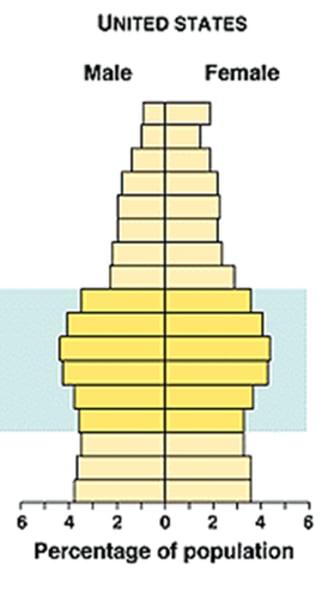
Arithmetic Density
The number of people living in a given unit area.
ex. United States, we can divide the population (approximately 290 million people) by the land area (approximately 9.0 million square kilometers, or 3.0 million square miles). The result shows that the Untied States has an arithmetic density of 30 person per square kilometer (78 person per square mile).
Baby Boom
A cohort of individuals born in the United States between 1946 and 1964, which was just after World War II in a time of relative peace and prosperity. These conditions allowed for better education and job opportunities, encouraging high rates of both marriage and fertility.
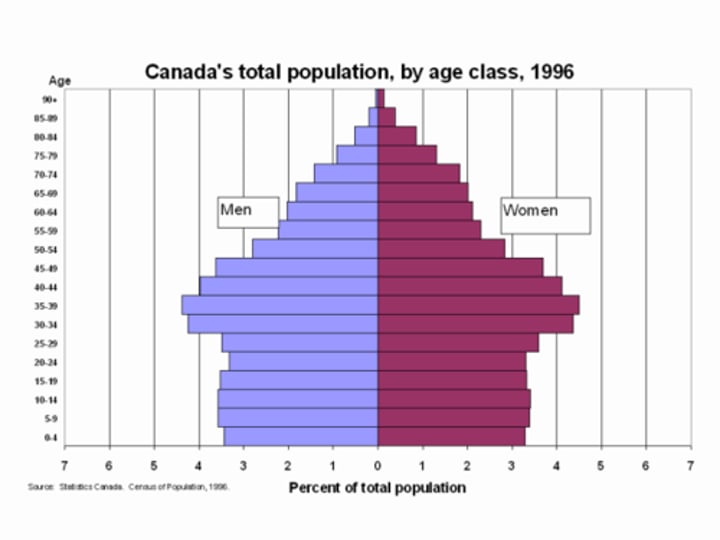
Baby Bust
Period of time during the 1960s and 1970s when fertility rates in the United States dropped as large numbers of women from the baby boom generation sought higher levels of education and more competitive jobs, causing them to marry later in life. As such, the fertility rate dropped considerably, in contrast to the baby boom, in which fertility rates were quite high.
Carrying Capacity
The largest number of people that the environment of a particular area can sustainably support.
ex. The number of people who could survive in a lifeboat after a shipwreck. Their survival depends on how much food and water they have, how much each person eats and drinks each day, and how many days they are afloat.
Census Tract
Small country subdivisions, usually containing between 2,500 and 8,000 persons, delineated by the U.S. Census Bureau as areas of relatively uniform population characteristics, economic status, and living conditions.
Chain Migration
The migration event in which individuals follow the migratory path of preceding friends or family members to an existing community.
ex. A family moves to America. His brother and his family moves to America next.
Child Mortality Rate
Number of deaths per thousand children within the first five years of life.
ex. America's child mortality rate is beneath 5 (per 1000)
Cohort
A population group unified by a specific common characteristic, such as age, and subsequently treated as a statistical unit.
ex. baby boom generation
Cotton Belt
The term by which the American South used to be known, as cotton historically dominated the agricultural economy of the region. The same area is now known as the New South or Sun Belt because people have migrated here from older cities in the industrial north for a better climate and new job opportunities.
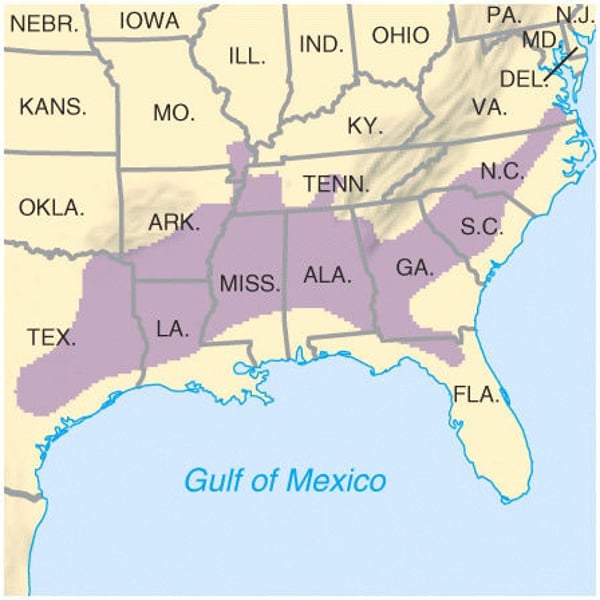
Crude Birth Rate
The number of live births per year per 1,000 people.
ex. united states- 13.2 per 1000
Crude Death Rate
The number of deaths per year per 1,000 people.
ex. united states- 8.4 per 1000
Demographic Accounting Equation
An equation that summarizes the amount of growth or decline in a population within a country during a particular time period taking into account both natural increase and net migration.
ex. you add people coming in and subtract people leaving
Demographic Transition Model
A sequence of demographic changes in which a country moves from high birth and death rates to low birth and death rates through time.
ex. The united states is a stage 4 country in the demographic transition model.
Demography
The study of human populatios, including their temporal and spatial dynamics.
Dependency Ratio
The ratio of the number of people who are either too old or young to provide for themselves to the number of people who must support them through their own labor. This is usually expressed in the form n:100, where n equals the number of dependents.
ex. America (2013)- 29.40%
Doubling Time
Time period required for a population experiencing exponential growth to double in size completely.
ex. at a 3% growth rate, the time t will take for a population to double, is less than 25 years.
Emigration
The process of moving out of a particular country, usually the individual person's country of origin.
ex. We emigrated from India.
Exponential Growth
Growth that occurs when a fixed percentage of new people is added to a population each year. Exponential growth is compound because the fixed growth rate applies to an ever-increasing population.
ex. population
Forced Migration
The migration event in which individuals are forced to leave a country against their will.
ex. africans were forced to leave africa during the north atlantic slave trade.
Generation X
A term coined by artist and author Douglas Coupland to describe people born in the United States between the years 1965 and 1980. This post-baby-boom generation will have to support the baby boom cohort as they head into their retirement years.
Geodemography
A division of human geography concerned with spatial variations in distribution, composition, growth, and movements of population; also known as population geography.
Immigration
The process of individuals moving into a new country with the intentions of remaining there.
ex. We immigrated to America.
infant mortality rate
the percentage of children who die before their first birthday within a particular country
ex. Infant mortality rate exceeds 10% in some less-developed countries
internal migration
the permanent or semi permanent movement of individuals within a particular country
ex. If we moved from Texas to New York.
intervening obstacles
any forces or factors that may limit human migration
ex. nation immigration policies
involuntary migration
(another word for forced migration, the migration event in which individuals are forced to leave a country against their will)
ex. africans forced to leave Africa during the north atlantic slave trade
life expectancy
the average age individuals are expected to live, which varies across space, between genders, and even between races
ex. america- 79 years old
Thomas Malthus
Author of Essay on the Principle of Population (1798) who claimed that population grows at an exponential rate while food production increases arithmetically, and thereby that, eventually, population growth would outpace food production.
maternal mortality rate
number of deaths per thousand of women giving birth
ex. America- In 2011, that number more than doubled, jumping to 17.8 deaths per 100,000 births
migration
a long term move of a person from one political jurisdiction to another
ex. moving to america
natural increase rate
the difference between the number of births and number of deaths within a particular country
ex. In more developed region of the world, which include North America, Japan, Europe, and Australia, the natural increase rate has decreased drastically.
neo-Malthusian
advocacy of population-control programs to ensure enough resources for current and future populations
overpopulation
a value judgement based on the notion that the resources of a particular area are not great enough to support that area's current population
ex. China and India
physiologic density
a ratio of human population to the area of cropland, used in less-developed countries dominated by subsistence agriculture
ex. The greatest population densities currently occur in eastern China, Japan, Southeast Asia, the Indian subcontinent, Western Europe, and the northeastern United States.
population density
a measurement of the number of persons per unit of land area
ex. United States the physiological density is 156 persons per square kilometer (404 per square mile) or arable land.
population geography
a division of human geography concerned with spatial variations in distribution, composition, growth, and movements of population
population pyramid
a model used in population geography to show the age and sex distribution of a particular population
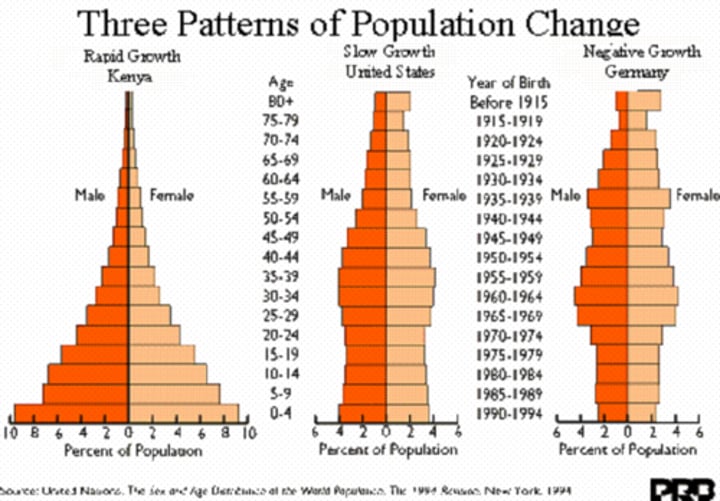
pull factors
attractions that draw migrants to a certain place
ex. a pleasant climate and employment or educational opportunities
push factors
incentives for potential migrants to leave a place
ex. harsh climate, economic recession, or political turmoil
refugees
people who leave their home because they are forced out, but not because they are being officially relocated or enslaved
ex. Syrian refugees
Rust Belt
The northern industrial states of the U.S., including Ohio, Michigan, and Pennsylvania, in which heavy industry was once the dominant economic activity. In the 1960s, 1970s, and 1980s, these states lost much of their economic base to economically attractive regions of the U.S. and to countries where labor was cheaper, leaving old machinery to rust in the moist northern climate.
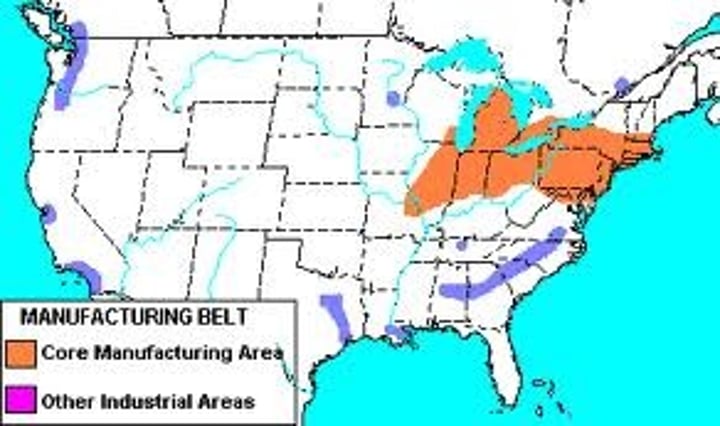
Sun Belt
U.S. region, mostly comprised of southeastern and southwestern states, which has grown most dramatically since World War II.
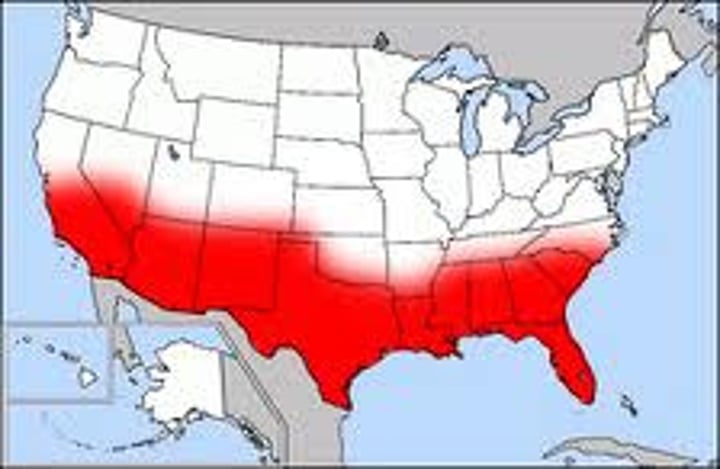
total fertility rate
the average number of children born to a woman during her childbearing years
ex. America (2012)- 1.88 births
voluntary migration
movement of an individual who consciously and voluntarily decides to locate to a new area; the opposite of forced migration
ex. Us moving to America
zero population growth
proposal to end population growth through a variety of official and nongovernmental family-planning programs